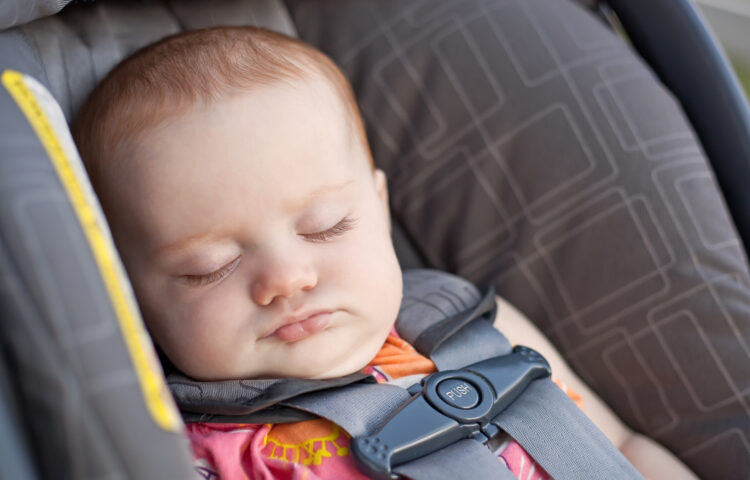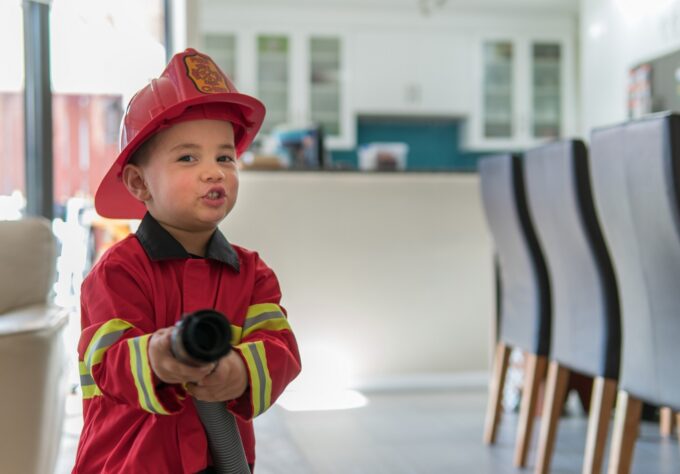In 2018, a disturbing record was set in the U.S. – 52 children died as a result of being left inside a hot car. You may think a hot car death could never happen to you or your family. But most parents or caregivers who left a sleeping baby or child in a car did it unintentionally and unknowingly.
You can ensure that a tragedy like this doesn’t happen by creating a plan to help you avoid distraction.
The Dangers of Leaving Children in the Car
The first thing to remember is that never, at any time, should you leave infants, children or someone who has special needs in a parked car. Even if you’ll only be gone a few minutes; even if the windows are cracked open; even if it’s not that hot outside.
Conditions inside a hot, parked car form a type of greenhouse effect where the temperature can increase up to 20 degrees Fahrenheit in just 10 minutes. In fact, the car could possibly reach 125 degrees very quickly. Leaving the windows slightly open doesn’t slow down the heat nor does it decrease the high temperatures.
A child’s body overheats three to five times faster than an adult body. When left in a hot car, their body is not able to cool itself quickly enough, which can result in heatstroke. Different than a fever from an infection, when a child’s internal temperature quickly goes above 104 degrees for too long, major organs can begin to shut down and they could suffer brain damage or die.
Tips to Avoid Tragedy
New parents are experiencing all kinds of changes: lack of sleep, fatigue, stress, and changes in hormones and daily routines. Add to it that infants need to be in rear-facing car seats, which look the same whether there’s a baby inside or not. And children often fall asleep in their car seats, becoming quiet, “barely there” passengers.
Everyone gets distracted with so much on their “To Do” list. There are several practices that parents and caregivers can add to their routines to make sure that the worst doesn’t happen.
- Before leaving and locking the car, make it a habit to always check the back seat and make sure that all children are out.
- If there is more than one adult present, clearly announce and confirm who is getting each child out.
- Using your mobile device is distracted driving! Put your phone down, especially when you’re behind the wheel, but also while exiting your car.
- Put your mobile device, handbag, laptop bag, or lunch in the back seat, so you will easily see your child when you remove your personal items.
- If there’s a change in your routine, be more aware.
- Talk to your childcare provider and have them alert you if your child is more than 10 minutes late.
- If someone else is driving your child, always check to make sure they have arrived safely.
If you see a child alone in a car, call 911. It could save a life.
Many hot car deaths have happened when kids lock themselves inside by mistake. Toddlers and young children love to mimic adults, so they like to get into parked cars on their own. To stop this from happening, always lock your car door when you’ve gotten out (especially when parked in the garage or driveway), make sure your kids don’t have easy access to your car keys, and most importantly, talk to them about cars being an unsafe place to play.
Signs of Heatstroke in Kids
It’s good to know the signs of heatstroke in children, especially during the hot summer months.
Call 911 if your child has been in extreme heat temperatures and shows one or more of these symptoms:
- Confusion
- Dizziness
- Weakness
- Loss of consciousness
- Flushed, dry, hot skin
- Not sweating
- Rapid breathing and heartbeat
- Severe headache
- Temperature of 104°F or higher
- Seizure
If you suspect heatstroke, you should take immediate action while waiting for emergency services. Take your child indoors or into the shade as quickly as possible and undress them. Use cool water to spray or sponge your child. Don’t give them water to drink or anything else by mouth. Put a cold pack on their neck or armpit. Don’t give them acetaminophen (Tylenol) or ibuprofen (Motrin, Advil).



